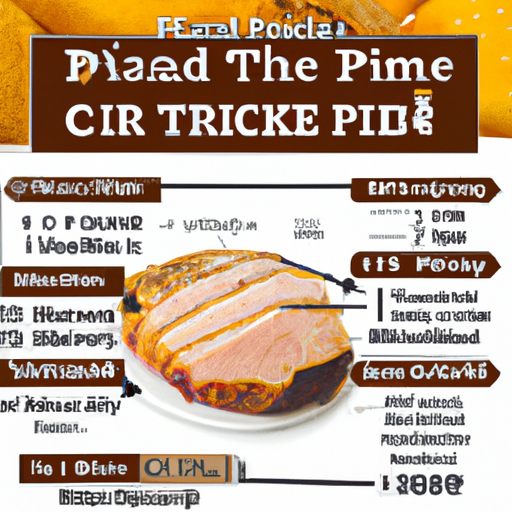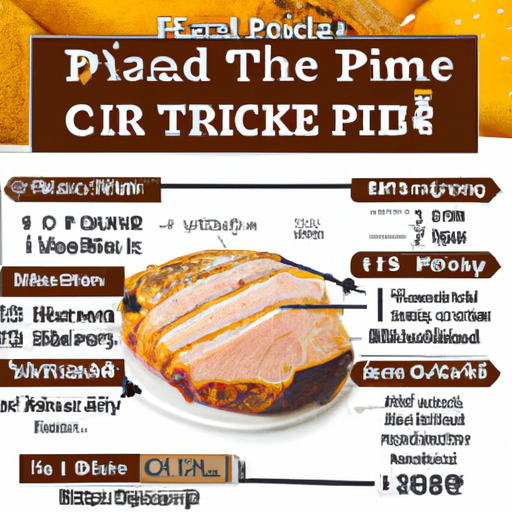Are you tired of guessing how long to cook your prime rib for the perfect tenderness and flavor? Look no further than “The Ultimate Prime Rib Cooking Chart.” This handy cooking chart takes the guesswork out of preparing your succulent prime rib by providing you with precise cooking times based on the weight and desired doneness. Whether you’re a seasoned chef or just starting out in the kitchen, this cooking chart is a must-have tool to ensure your prime rib turns out perfectly juicy and delicious every time. Say goodbye to overcooked or undercooked prime rib and hello to mouthwatering perfection with “The Ultimate Prime Rib Cooking Chart.”
The Ultimate Prime Rib Cooking Chart
Welcome to the ultimate guide for cooking the perfect prime rib! Whether you’re a seasoned chef or a beginner in the kitchen, this comprehensive article will take you through every step of the process. From choosing the right cut to serving up a mouthwatering meal, we’ve got you covered. So let’s dive in and discover the secrets to an unforgettable prime rib experience!

Choosing the Right Cut
When it comes to prime rib, choosing the right cut of meat is crucial. Look for a well-marbled piece of beef with a nice fat cap on top. This fat content adds flavor and helps keep the meat juicy during the cooking process. The two most common cuts of prime rib are the standing rib roast and the ribeye roast. The standing rib roast is preferred by many due to its bone-in nature, which adds even more flavor to the final dish. Whichever cut you choose, make sure to select one that is well-marbled and of high quality.
Preparing the Meat
Before you start cooking your prime rib, it’s important to properly prepare the meat. Start by removing it from the refrigerator about 1-2 hours before cooking. Allowing the meat to come to room temperature will help ensure even cooking throughout. While the meat is resting, take the time to pat it dry with a paper towel. This will help achieve a nice sear and crust during the cooking process. Also, take the opportunity to trim any excess fat if desired.
Seasoning Options
When it comes to seasoning your prime rib, there are countless options to choose from. A classic and simple approach is to use a combination of salt, pepper, and garlic. However, don’t be afraid to get creative and experiment with different herbs and spices. Some popular choices include rosemary, thyme, paprika, and onion powder. Create your own unique seasoning blend by combining your favorite flavors. Just remember to generously coat the entire surface of the meat for maximum flavor.

Cooking Methods
There are several cooking methods you can choose from when preparing your prime rib. The most popular methods include roasting, grilling, and smoking. Roasting is the traditional method and tends to be the most foolproof. This involves cooking the prime rib in the oven at a relatively low temperature for a longer period of time. Grilling is a great option for those who love the smoky flavor and charred crust. Smoking, on the other hand, takes things to the next level by infusing the meat with a delicious smoky aroma. Choose the method that best suits your preferences and cooking equipment.
Determining the Cooking Time
Determining the cooking time for your prime rib can be a bit tricky, as it depends on several factors including the size of the roast, the desired level of doneness, and the cooking method used. As a general rule of thumb, you can calculate the cooking time by allowing 15-20 minutes per pound of meat for medium-rare doneness. However, it’s always best to rely on a meat thermometer for accuracy. We’ll discuss internal temperatures in the next section.
Internal Temperatures for Doneness
To achieve the perfect degree of doneness for your prime rib, it’s important to monitor its internal temperature throughout the cooking process. Here are the recommended internal temperatures for different levels of doneness:
- Rare: 120-125°F (49-52°C)
- Medium Rare: 130-135°F (54-57°C)
- Medium: 140-145°F (60-63°C)
- Medium Well: 150-155°F (66-68°C)
- Well Done: 160°F (71°C) and above
Using a reliable meat thermometer, insert it into the thickest part of the roast without touching the bone. Once your prime rib reaches the desired temperature, remove it from the heat source and let it rest before carving.
Resting and Carving the Prime Rib
Resting the prime rib is a crucial step that should not be skipped. Once you’ve removed the roast from the heat source, transfer it to a cutting board and loosely cover it with aluminum foil. Let it rest for at least 15-20 minutes. Resting allows the juices to redistribute within the meat, resulting in a juicier and more flavorful final product. Additionally, it makes carving much easier. When it comes time to carve, start by cutting between the bones to separate the individual rib portions. Then, slice the meat against the grain into your desired thickness.
Serving Suggestions
Now that your prime rib is cooked to perfection and ready to be served, it’s time to think about the accompanying dishes. Prime rib pairs well with a variety of sides and sauces. Common choices include creamy horseradish sauce, au jus for dipping, roasted vegetables, mashed potatoes, and Yorkshire pudding. For a more elegant presentation, garnish your platter with fresh herbs like rosemary or thyme. The possibilities are endless, so feel free to get creative and customize your meal to suit your taste.
Leftovers and Storage Tips
If you happen to have any leftovers from your prime rib feast, don’t worry – they can be just as delicious the next day! To store the leftovers, ensure they are fully cooled before transferring them to an airtight container or wrapping them tightly in plastic wrap. Properly stored, leftover prime rib can be kept in the refrigerator for up to 3-4 days. You can enjoy the leftovers cold in sandwiches or reheat them gently in the oven to preserve their tenderness.
Tips and Tricks
To wrap up this ultimate guide, here are a few additional tips and tricks to elevate your prime rib cooking game:
- Invest in a good quality meat thermometer to ensure accurate temperature readings.
- Consider using a meat rub or marinade to add extra flavor to your prime rib.
- If using a bone-in roast, ask your butcher to tie it back onto the roast for easier carving.
- Opt for a roasting rack to elevate the prime rib off the bottom of the roasting pan and promote even airflow.
- Allow the prime rib to rest at room temperature after seasoning for at least 30 minutes before cooking.
- Don’t be afraid to ask for assistance from your local butcher when purchasing your prime rib.
With this comprehensive guide, you are well-equipped to cook the ultimate prime rib. Remember to take your time, experiment with flavors, and enjoy the process. Happy cooking, and bon appétit!
